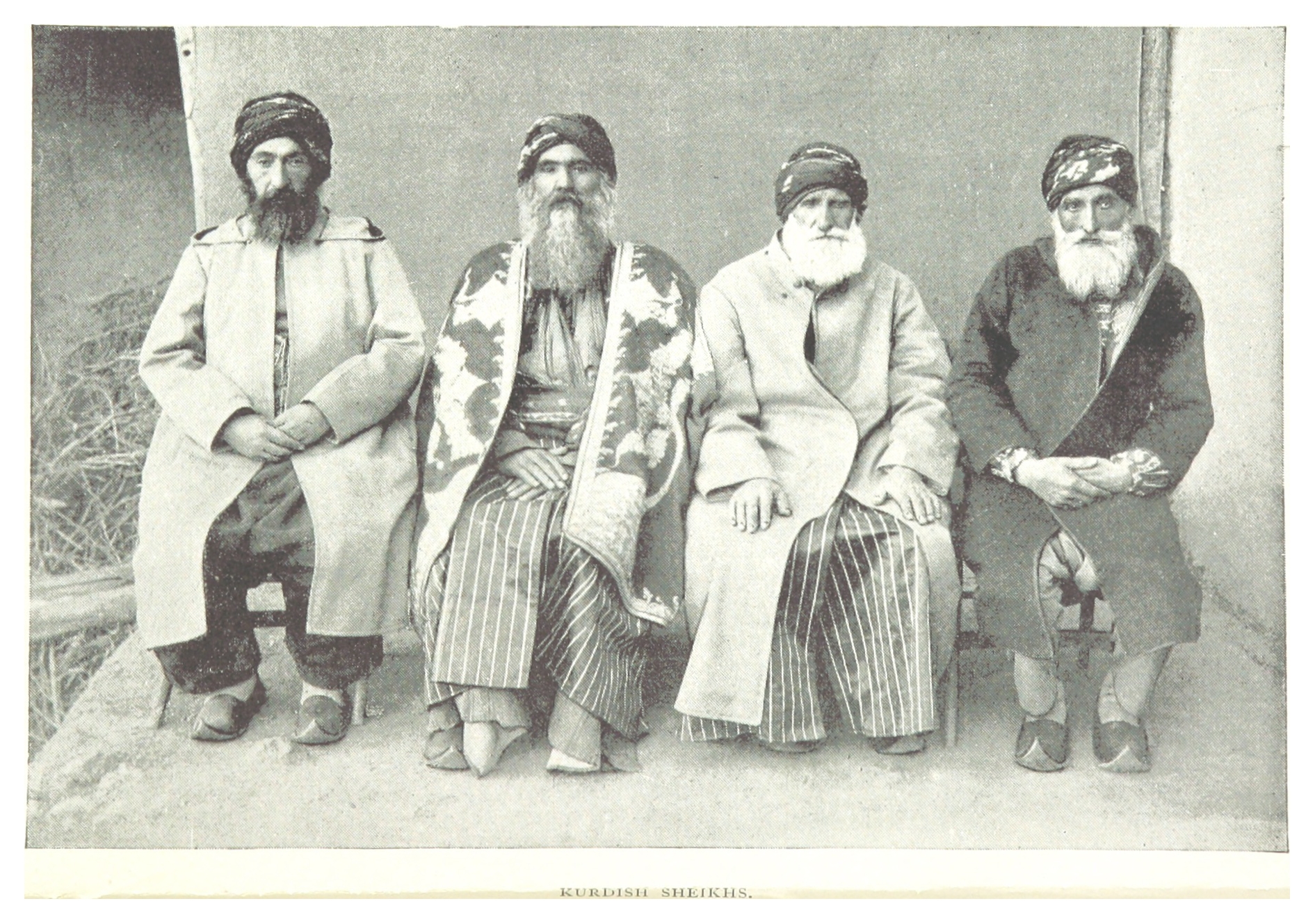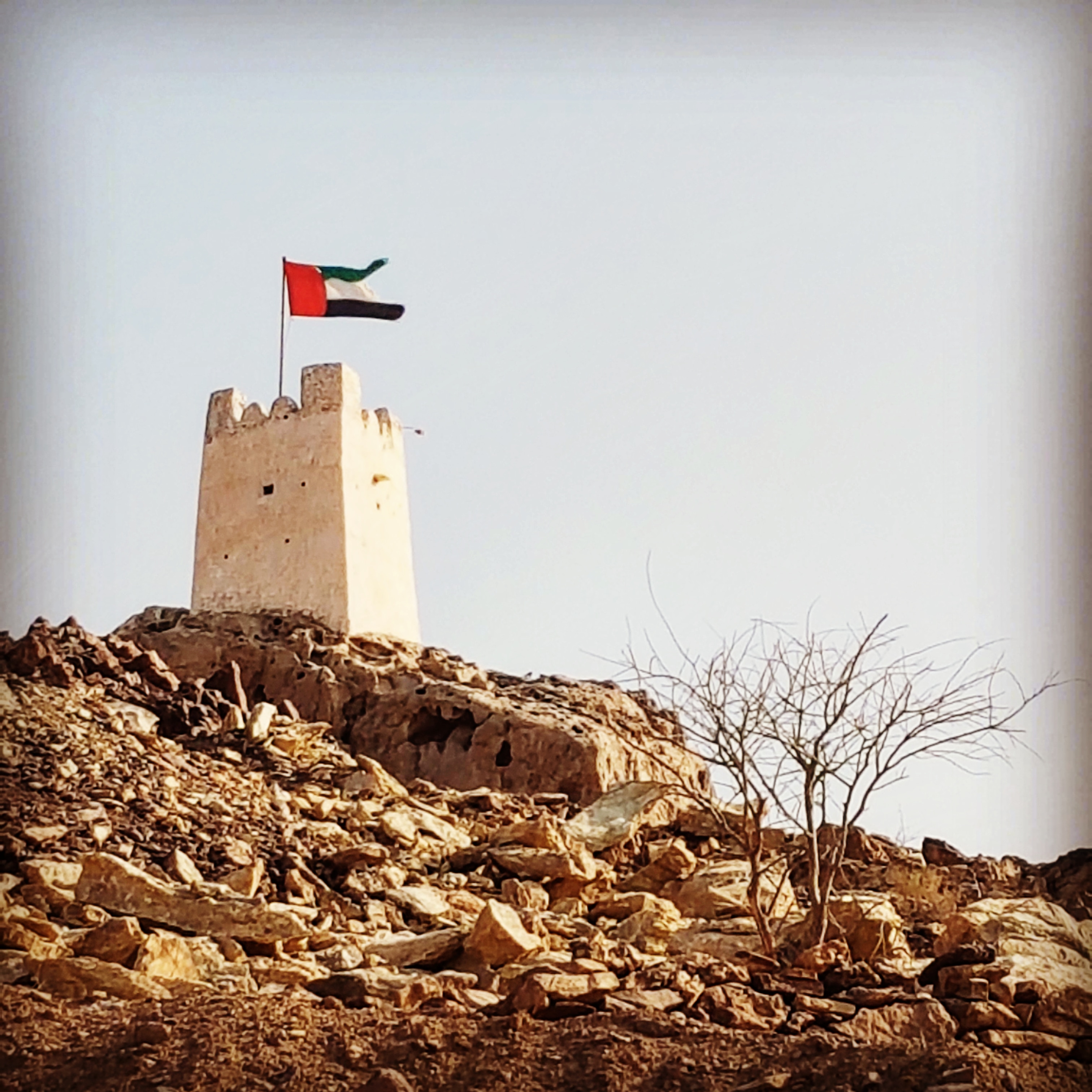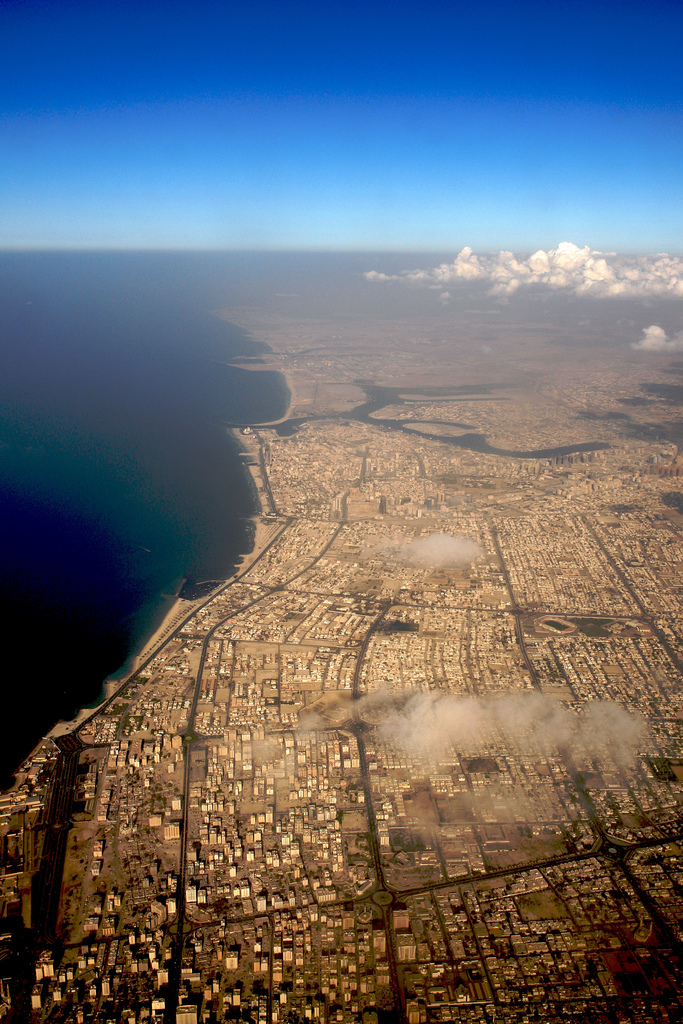|
Maktoum Bin Hasher Al Maktoum
Sheikh Maktoum bin Hasher Al Maktoum was the Ruler of Dubai from April 1894–February 1906. The fifth Al Maktoum, Maktoum Ruler since the establishment of the dynasty in 1833. Maktoum's short but 'liberal and enlightened' reign was to transform the coastal port. He was responsible for the establishment of the trading community of Dubai, encouraging disaffected merchants from Bandar Lengeh, Lingeh to bring their businesses to Dubai after the Persian government had introduced unpopular taxes. Accession Maktoum bin Hasher came to power following the death of his uncle, Sheikh Rashid bin Maktoum, who had entered into the 'Exclusive Agreement' of 1892 with the British Empire, British. The latest in a number of treaties signed since the General Maritime Treaty of 1820, which bound the Trucial States, Trucial Sheikhs to maintain peace at sea, the Exclusive Agreement bound Dubai and its other signatories to protectorate status, including an undertaking not to "cede, sell, mortgage or o ... [...More Info...] [...Related Items...] OR: [Wikipedia] [Google] [Baidu] |
Sheikh
Sheikh ( , , , , ''shuyūkh'' ) is an honorific title in the Arabic language, literally meaning "elder (administrative title), elder". It commonly designates a tribal chief or a Muslim ulama, scholar. Though this title generally refers to men, there are also a small number of female sheikhs in history. The title ''Syeikha'' or ''Sheikha'' generally refers to women. In some countries, it is given as a surname to those of great knowledge in religious affairs, by a prestigious religious leader from a silsila, chain of Sufi scholars. The word is mentioned in the Qur'an in three places: verse 72 of Hud (surah), Hud, 78 of Yusuf (surah), Yusuf, and 23 of al-Qasas. A royal family member of the United Arab Emirates and some other Arab countries, also has this title, since the ruler of each emirate is also the sheikh of their tribe. Etymology and meaning The word in Arabic stems from a Semitic root, triliteral root connected with aging: , ''shīn-yā'-khā. The title carries the me ... [...More Info...] [...Related Items...] OR: [Wikipedia] [Google] [Baidu] |
Saqr Bin Khalid Al Qasimi
Sheikh Saqr bin Khalid Al Qasimi (1883–1914) was the Ruler of Sharjah, a Trucial State and now one of the United Arab Emirates, from 1883–1914. He took control over Sharjah in a coup during the absence of his uncle, Salim bin Sultan Al Qasimi, and ruled both Sharjah and, from 1900 until his death in 1914, Ras Al Khaimah. Accession Saqr bin Khalid was left in charge of Sharjah when his unpopular uncle, Salim bin Sultan Al Qasimi, travelled to Ras Al Khaimah and he took the opportunity to seize power over the town. He was quickly supported by the Rulers of Ras Al Khaimah, Umm Al Qawain, Ajman and Dubai. Having cemented his position, he conferred a pension on the former Ruler, Salim bin Sultan Al Qasimi, which guaranteed him an annual payment as well as the retention of his property in Sharjah and the primacy over the island of Abu Musa. There were issues both with Salim's conduct and Saqr's payment of the pension, culminating in a meeting in Ajman taking place in 1884 with ... [...More Info...] [...Related Items...] OR: [Wikipedia] [Google] [Baidu] |
Bani Qitab
The Bani Qitab (Singular ''Al Qetbi'', ) is an Arab tribe of the United Arab Emirates (UAE) and Oman. The singular form of the name, ''Al Ketbi'', is a common family name in the Northern UAE today. Consisting of a settled southern section and a nomadic northern section, the tribe was long influential in the conduct of affairs in the interior of the Trucial States. The Northern branch mostly settled in the inland towns of Dhaid and Al Falayah. Settlement The tribe consisted, at the turn of the 19th century, of some 2,100 nomadic Bedouin (of whom some 600 were fighting men) and 2,700 settled people. The Bedouin ''dar'', or district, of the Bani Qitab stretched from South of the Buraimi oasis to the Eastern foothills of the Hajar Mountains, the Jiri plain to the North of Sharjah and the fertile area around Sharjah's inland oasis town of Dhaid. The Southern Bani Qitab, some 500 households, settled around the village of Aflaj Bani Qitab in the Dhahirah area. Over time these sepa ... [...More Info...] [...Related Items...] OR: [Wikipedia] [Google] [Baidu] |
Hatta, United Arab Emirates
Hatta () is an inland exclave of the emirate of Dubai in the United Arab Emirates. Formerly an Omani territory, its ownership was transferred to Dubai in or around 1850. Geography It lies to the south-east of Dubai's main territory and is about east of Dubai. It is located relatively high in the Hajar Mountains. It borders Oman to the east and the south, the Ajman exclave of Masfout to the west, and Ras al-Khaimah to the north. History Formerly, known as Hajarain, Hatta became a dependency of Dubai during the reign of Hasher Bin Maktoum after the Omani Sultan Turki bin Said transferred the territory, finding himself unable to defend it against the Na'im of Buraimi, who had settled neighbouring Masfout (today a part of the emirate of Ajman). The village was still called Hajarain as recently as 1906. The old village of Hatta includes two prominent military towers from the 1880s, a fort from 1896 and the Juma mosque, which was built in 1780 and is the oldest building in H ... [...More Info...] [...Related Items...] OR: [Wikipedia] [Google] [Baidu] |
Masfout
Masfout is a village that forms part of the eponymous exclave of Masfout in Ajman, one of the seven emirates forming the United Arab Emirates. It is surrounded by Ras Al Khaimah, the Dubai exclave of Hatta and Oman (Mahdha Wilayat of Al Buraimi Governorate). It is only accessible from Ajman itself by crossing territories of Sharjah, Ras Al Khaimah, and Oman. At the census of 2017 the city had a population 8988 on an area of 86.59 km2, which corresponds to a population density of 103.8 per km2. The village has a number of government facilities and municipal centres, including a dedicated courthouse built in 2017. The 13,500 square metre Waraqa Park surrounds the former house of the founder of Ajman, Sheikh Rashid bin Humaid Al Nuaimi. In 2017 the Masfout Heights Resort Project was announced, intended as a mixed use hotel and tourism project. Digging water wells in the exclave was banned by the Ajman government as water depletion became an issue with over 80 unregulated well ... [...More Info...] [...Related Items...] OR: [Wikipedia] [Google] [Baidu] |
Emirate Of Ajman
The Emirate of Ajman (; ) ( Gulf Arabic: إمارة عيمان emāratʿymān) is one of the seven emirates of the United Arab Emirates. It joined the United Arab Emirates federation on December 2, 1971. It has an area of 259 square kilometers (100 sq mi), which makes it the smallest of the emirates in terms of area, while its population of approximately 504,846 in 2017 according to the Federal Competitiveness and Statistics Center makes it the fourth most populous emirate in the country. It is named after the city of Ajman, which is its seat of government. The main landmass of the emirate is a semi-enclave, surrounded on the north, east, and south by the Emirate of Sharjah. Located on the coast of the Persian Gulf, Ajman also controls two small inland exclaves: Manama and Masfout, both of which are primarily agricultural. [...More Info...] [...Related Items...] OR: [Wikipedia] [Google] [Baidu] |
Abdulaziz Bin Humaid Al Nuaimi
Abdulaziz bin Humaid Al Nuaimi was Ruler of Ajman, one of the Trucial States, which today form the United Arab Emirates (UAE), from 1900 to 1910. He steered Ajman through a period in which tribal conflicts triggered instability throughout the coast but was to ultimately meet the fate he had himself engineered for his predecessor. Coup In 1900, following a coup in which Abdulaziz' nephew, Humaid bin Rashid Al Nuaimi II was murdered, Abdulaziz took power with popular support. He wrote to the British Resident at Bushehr, confirming his accession and his agreement to abide by all of the treaties between his predecessors and the British. He also moved to ensure that British subjects resident in Ajman were assured of their safety and that of their interests. A close friend of Saqr bin Khalid Al Qasimi, Sheikh Abzulaziz travelled to Sharjah to attend the Curzon's Viceregal Darbar of Curzon on 21 November 1903. Abdulaziz was present at the first formal meeting of the Sheikhs of the ... [...More Info...] [...Related Items...] OR: [Wikipedia] [Google] [Baidu] |
Umm Al Quwain
Umm Al Quwain (UAQ; Arabic: أم القيوين, pronounced: /ʔumː alqejˈwejn/, Gulf Arabic: �ʊm͜ː 'æl ge̞ˈwe̞n) is the capital and largest city of the Emirate of Umm Al Quwain in the United Arab Emirates. The city is situated on the peninsula of Khor Al Bidiyah, with its nearest major cities being Sharjah to the southwest and Ras Al Khaimah to the northeast. The city's economy is primarily based on fishing and tourism, with some industrial activities and trade. Umm Al Quwain is connected to Ras Al Khaimah and Abu Dhabi by paved roads. Approximately 32 kilometers inland from the city is the oasis of Falaj Al Mualla, which has date palm plantations. The ruling family of Umm Al Quwain, the Al Mualla family, descends from the Al Mualla lineage of the Al Ali tribe. The family originally lived on Siniyah Island, but moved to the mainland due to a lack of freshwater resources and established an independent Sheikhdom. The current ruler of Umm Al Quwain is Sheikh Saud b ... [...More Info...] [...Related Items...] OR: [Wikipedia] [Google] [Baidu] |
Rashid Bin Ahmad Al Mualla
Sheikh Rashid bin Ahmad Al Mualla (1876–1922, ) was the Ruler of Umm Al Quwain from 1904–1922, one of the Trucial States and today one of the seven emirates forming the United Arab Emirates (UAE). He gained influence over the tribes of the interior at the expense of the pre-eminent Trucial Ruler of the time, Sheikh Zayed bin Khalifa Al Nahyan. Accession He acceded on 13 June 1904 following the death of his father, Sheikh Ahmad bin Abdulla Al Mualla. He wrote to the British Political Resident in September of that year, affirming his accession and accepting the treaty obligations entered into by his forebears. Soon after acceding, he married a daughter of the Ruler of Ajman – his Uncle (on his mother's side). Warring tribes Rashid bin Ahmed was an astute politician and embarked on a campaign to enhance his influence among the Bedouin tribes, particularly the powerful Bani Qitab. This led, in 1905, to his involvement in a dispute which had broken out in the Wadi Hatta b ... [...More Info...] [...Related Items...] OR: [Wikipedia] [Google] [Baidu] |
Emirate Of Abu Dhabi
The Emirate of Abu Dhabi is one of seven Emirates of the United Arab Emirates, emirates that constitute the United Arab Emirates. It is the largest emirate, accounting for 87% of the nation's total land area or . Abu Dhabi also has the second-largest population of the seven emirates. In mid-2016, the emirate had a population of 2,908,000, with 551,500 being Emirati citizens, accounting for around 19% of the population. In 2023, the emirate's population had grown to 3,789,860. The city of Abu Dhabi, after which the emirate is named, is the capital of both the emirate and the federation. In the early 1970s, two important developments influenced the status of the Emirate of Abu Dhabi. The first was the establishment of the United Arab Emirates in December 1971, with Abu Dhabi as its initially temporary political and administrative capital. The second was the sharp increase in oil prices following the Yom Kippur War, which accompanied a change in the relationship between the oil ... [...More Info...] [...Related Items...] OR: [Wikipedia] [Google] [Baidu] |
Al Qasimi
The Al Qasimi (, spelled sometimes as Al Qassimi or Al Qassemi; plural: Al Qawasem and, archaically, Joasmee) is an Arab dynasty in the Persian Gulf that rules Emirate of Sharjah, Sharjah and Emirate of Ras Al Khaimah, Ras Al Khaimah, today forming two of the seven emirates of the United Arab Emirates. They are one of the longest reigning royal families in the Arabian Peninsula, Arabian peninsula. Historically, they also ruled over the town of Bandar Lengeh, Lengeh as sheikhs for a century until its annexation by Iran in 1887. Historically, the "Qawasim" were a confederation of Sunni Islam, Sunni Tribes of Arabia, tribes in south eastern Gulf region surrounding the cities of Ras al-Khaimah and Sharjah; and faced strong rivalry with the Omani Empire, Omani empire for naval domination along the Persian Gulf. Due to their allegiance to the Wahhabism, Wahhabi Emirate of Diriyah, Emirate of Dir'iyah, the British Empire branded them as "pirates" and fought two major military campaigns ... [...More Info...] [...Related Items...] OR: [Wikipedia] [Google] [Baidu] |
Ras Al Khaimah
Ras Al Khaimah (; ), often referred to its initials RAK, is the largest city and capital of the Emirate of Ras Al Khaimah in the U.A.E. The city had a population of 191,753 in 2025, and is the sixth-most populous city in UAE after Dubai, Abu Dhabi, Sharjah, Al Ain and Ajman. The city is divided by a creek into two parts: old town in the west and Al Nakheel in the east. The town is the successor to the Islamic era port and trading hub of Julfar. Etymology ''Ras Al Khaimah'' translates to "Headland of the Tent". ''Khaimah'' () means 'Tent', but also refers to the palm frond houses or ''areesh'' that were common in the area. History Antiquity Ras Al Khaimah has been the site of continuous human habitation for 7,000 years, with archaeological finds dating back to the Neolithic. The northern area of the city today known as Ras Al Khaimah was previously the location of the important Islamic era settlement and port of Julfar. Archaeological evidence has demonstrated that Julf ... [...More Info...] [...Related Items...] OR: [Wikipedia] [Google] [Baidu] |





